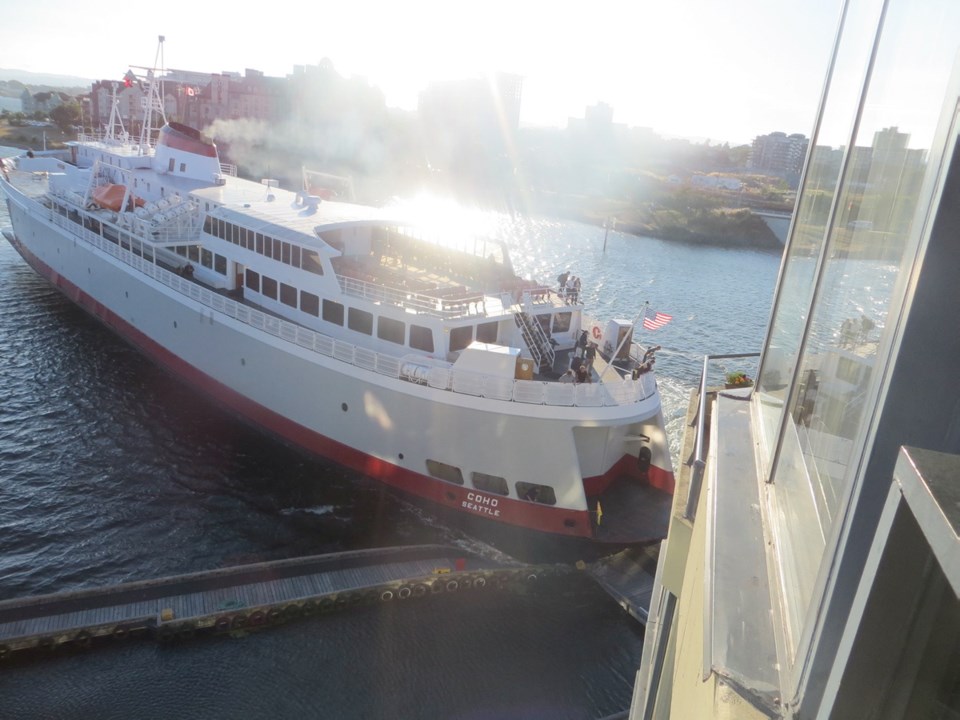A communications safety system failure between the bridge and the engine room is being blamed for the July 10 crash of the MV Coho that splintered a dock in the Inner Harbour.
The ship failed to stop reversing as it prepared to leave on its 7:30 p.m. sailing to Port Angeles, Wash. It continued, on schedule, after it was cleared by the harbour master.
The Transportation Safety Board’s marine investigation unit for the Pacific region determined the crash was caused by an old, faulty switch in the telegraph system.
“[When the captain] gives an order on the telegraph, there’s an indicator down below in the engine room that rings an alarm and tells [the crew] what they want on the bridge,” said Raymond Mathew, manager of the unit, on Friday. “The indicator down below didn’t go on.”
He said crew members noticed the indicator hadn’t gone off, and got on the direct phone line between the engine room and the bridge to remedy the error.
The broken switch was replaced in Port Angeles.
The collision is still being investigated by Transport Canada’s Marine Safety Unit and the U.S. Coast Guard, which is required to investigate because the vessel is registered in the U.S.
Ryan Burles, president of Black Ball Ferry Line, which owns and operates the Coho, said he had not spoken to Transport Canada or the U.S. Coast Guard about the results of their investigations, but expected to hear from them shortly.
The cause given by the Transportation Safety Board matches up with the company’s own conclusions, he said.
“We have a very good culture, but it shows you that you can never be good enough,” he said.
“You have to continually look at what you do and how you do it.”



